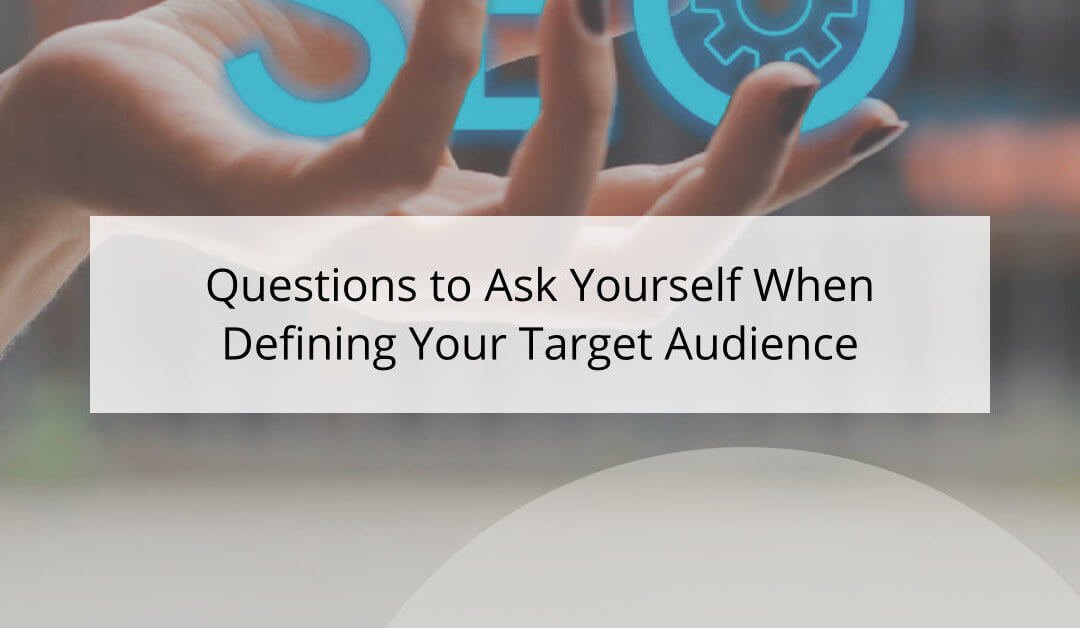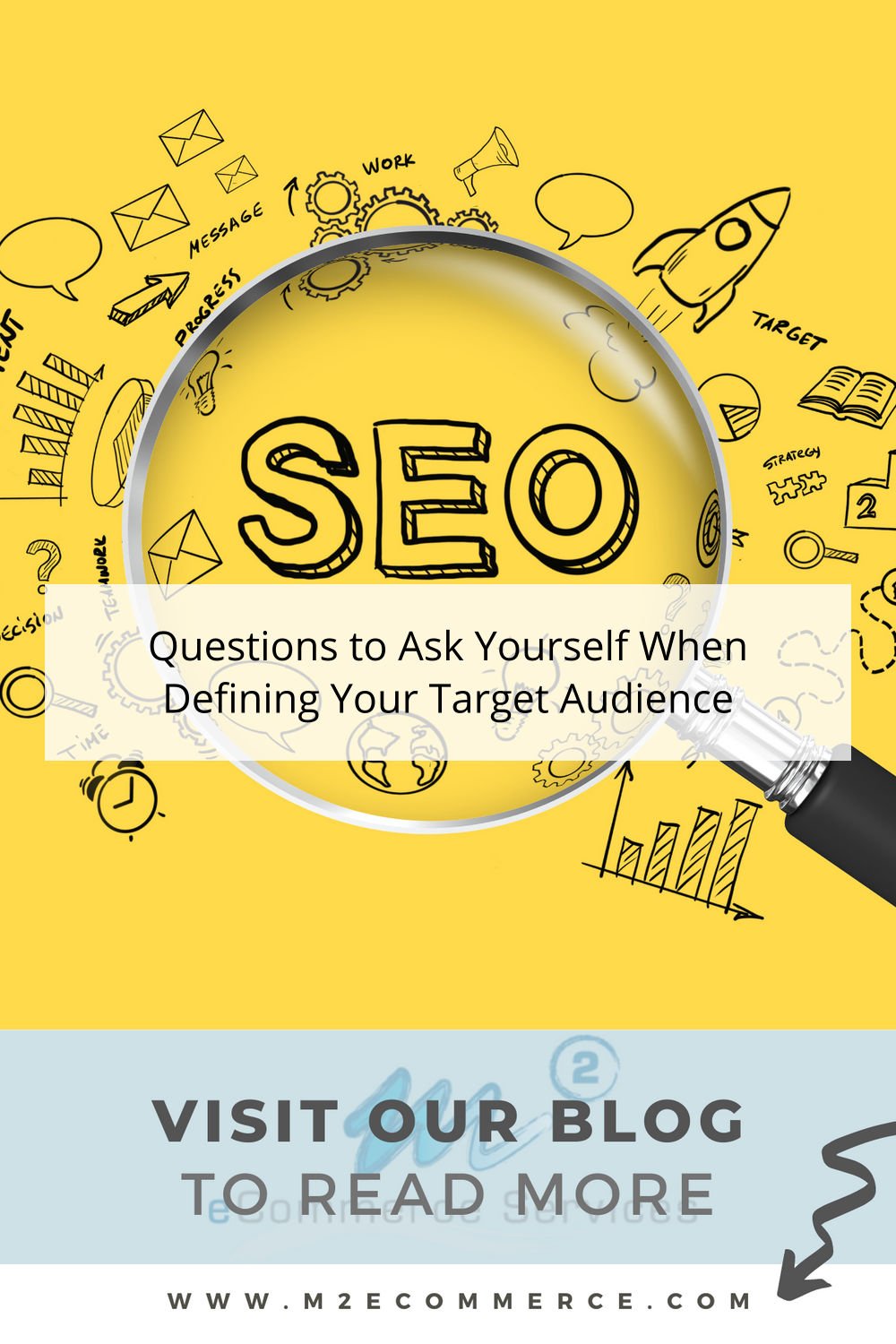As a content strategist, understanding your target audience is essential. It’s the key to creating effective content that resonates with your viewers.
But how do you go about defining who your target audience is? It can be overwhelming, but answering a few simple questions can help you narrow down the specifics and develop a clear picture of the people you’re trying to reach.
Knowing who you’re talking to – and what their needs are – gives you control over your message and helps ensure that it’s reaching the right people. By asking yourself the right questions, you can gain insight into their motivations and desires, giving you an edge when it comes to crafting content they’ll want to consume.
So let’s dive in and explore some of the key questions to ask yourself when defining your target audience!
What Are Your Audience’s Needs?
As a content strategist, it is essential to understand the needs of your target audience. Knowing what they want and need from you can help you tailor your content to meet their expectations.
While there are always time constraints and budget limitations, these should never stand in the way of getting to know your readers and identifying what drives them to engage with your message.
One way to do this is by taking a step back and looking at their behavior objectively. What kind of conversations are they having? What topics are they interested in talking about? How do they prefer receiving information?
By gathering data from various sources, such as social media platforms or surveys, you’ll have a better understanding of who your audience is and what they’re looking for.
Knowing your audience’s needs also means being aware of their pain points – the problems that keep them up at night or make it difficult for them to reach their goals.
This knowledge can help inform how you craft messages that resonate with the people you’re trying to reach, while also helping move them towards action. By understanding what matters most to your readers, you can create content that speaks directly to their needs.
With this insight, you’ll be able to put yourself in a position where you can deliver value that stands out from the competition.
Who Is Your Competition Targeting?
To successfully identify your target audience, it’s important to understand the demographics of your competitors’ target audience. Consider age, gender, location, and other demographic details when building your own target profile.
Additionally, consider how they craft their brand messaging and what strategies they use to reach their target audience. Are they using social media, influencers, or other tactics? What keywords and phrases to they use?
Taking all these elements into account will help you determine who you should be targeting with your own strategies.
Audience Demographics
Are you clear on who your competition is targeting?
Knowing the audience demographics of your competitors will help you identify potential opportunities.
Start by considering the income levels and lifestyle trends of their target market.
Ask yourself: Who are they targeting in terms of age, gender, and location?
Are there any specific behaviors or interests that this demographic may have?
It’s also important to look at how these factors interact with one another and how they can influence purchasing decisions.
Understanding these nuances can be incredibly useful in developing a successful strategy for your business.
With a better understanding of the demographic landscape, you’ll be able to pinpoint which consumers are most likely to purchase from you, rather than from someone else.
Brand Messaging
Once you understand who your competitors are targeting and the demographics they are appealing to, you can start crafting your own brand messaging.
Strategically engaging with potential customers through effective content optimization is key for success. Whether it be through SEO practices or social media campaigns, having an understanding of how to tailor your message for a specific audience will ensure that you stand out from the competition and capture those who were previously unreachable.
Crafting the perfect message requires an understanding of their values and desires, as well as an awareness of what makes them unique in comparison to other segments. Creating messages that evoke emotion, provide value, and resonate with potential customers will help to build trust and loyalty which can lead to higher conversion rates and engagement strategies that work.
The end result should be a carefully tailored message that is tailored to each segment in order to maximize its reach and effectiveness.
Competitor Strategies
Once you understand who your competitors are targeting and the demographics they are appealing to, it’s time to take a look into their strategies.
Every successful business has marketing plans in place, whether it be through SEO practices or social media campaigns, that help them reach their target audience and stand out from the competition. It’s important for you to do the same if you want to capture those previously unreachable customers.
Developing effective strategies is essential for success, so it’s important to stay up-to-date on what your competitors are doing and learning from their mistakes. Take a look at the content they’re creating, how they’re engaging with potential customers, and what kind of results they’re seeing — this will allow you to adjust your own approach accordingly.
Additionally, having an understanding of where people are spending their time online can also help inform your decisions when developing marketing plans.
By taking time to thoroughly analyze competitor strategies, you can make sure that you’re providing value and resonating with potential customers in just the right way. This in turn builds trust and loyalty which can lead to higher conversion rates for your business.
Where Do Your Audience Members Spend Their Time Online?
The next step in understanding your target audience is to pinpoint where they spend their time online. This will help you build effective marketing strategies and target the right people with your message.
Social media is an important tool for connecting with your audience and building relationships. It’s important to understand which platforms are the most popular among your target demographic and create content accordingly.
It’s also essential to analyze the type of content that resonates with your target audience. What kind of posts do they interact with? Are there any trends or topics that attract them? Which accounts do they follow, and what kind of content do those accounts post? By gaining an understanding of the type of content that engages your audience, you can create more effective social media campaigns tailored specifically to them.
Finally, you should also look at other channels where your target demographic spends their time online. What sites do they visit frequently? Are they active on discussion forums or news sites related to their interests? Knowing where else your audience hangs out online can help you tailor marketing strategies and gain a better insight into what resonates with them.
With this knowledge, you can more effectively reach out and engage them in meaningful conversations about your brand.
With a better understanding of where your target audience spends their time online, it’s now time to dig deeper into what are their interests and hobbies.
What Are Their Interests And Hobbies?
As we move from the previous section about where your audience members spend their time online, it is important to also consider what their interests and hobbies are. After all, this information will be essential to developing effective engagement strategies that will drive brand loyalty.
To start, take a look at the demographics of your potential customers. Ask yourself: What types of products do they typically purchase? Are there any particular trends or interests that could inform your approach? Take some time to research their shopping habits, as this can provide invaluable insight into the type of content they’d be likely to engage with.
From here, you can create content tailored specifically to your target audience’s interests and hobbies. Try leveraging relevant topics in your messaging campaigns and social media posts.
Additionally, consider incorporating feedback from your customer base into your strategy; after all, no one knows what they truly want better than they do! This way you can ensure that you are engaging with them on a personal level and providing them with content that resonates with their individual needs.
With these tools in place, you will have the necessary foundation for building long-term relationships between your brand and its customers.
Armed with this knowledge about what interests and hobbies resonate with our target audience, we are now ready to dive into understanding their goals and values.
What Are Their Goals And Values?
Understanding the values and goals of your target audience is essential in creating a successful content marketing strategy. By exploring the motivations behind their behavior, you can tailor your messaging to both reflect and meet their needs.
To do this, consider what drives them to act; this could be anything from brand recognition to market share or even something more personal like professional growth or giving back to the community. Your audience’s values will also determine which types of content will resonate with them.
For instance, if they are looking for a sense of belonging, then stories about how your product has helped other customers may be effective. Alternatively, if they are more focused on market share and competition, then showcasing your product as superior to others may strike a chord.
By getting an understanding of what motivates them, you can create content that speaks directly to their needs and desires. This helps build trust and connection with your brand which is essential for long-term success in the marketplace.
With this knowledge in hand, you can begin considering how best to reach out to your audience and how they search for information related to products like yours.
How Do They Search For Information?
Understanding how your target audience looks for information is key to getting your message in front of them. To determine how they search, you need to understand their motivations and expectations when searching online.
The first step is to figure out the types of search terms they use when looking for content that is relevant to them. When considering what kind of search terms your target audience might use, ask yourself these questions:
- What words do they use to describe their problem?
- What are their questions or needs?
- How specific or broad are their searches?
- What type of language do they use when searching online?
- How do their searches change in different contexts or scenarios?
By understanding the context in which your target audience looks for information, you can create content that speaks directly to them and capture their attention. You will also be able to effectively utilize keywords and phrases that will boost your visibility on search engines.
Once you have identified the terms used by your target audience, you can tailor content around those keywords and phrases with greater confidence. Now it’s time to focus on how you can reach them effectively.
How Can You Reach Them Effectively?
Reaching your target audience is an essential step in any successful marketing strategy. But how can you do it effectively? Content strategists must create engaging content that speaks to the needs and desires of the target audience, while also incorporating social media strategies.
There are several strategies that content strategists use when reaching their target audience. To begin with, strategists must identify what type of content will be most engaging for the target audience. It is important to establish a tone and style that resonates with the particular group being targeted. Furthermore, strategists should consider how to best leverage social media channels in order to increase engagement and reach as wide an audience as possible.
| Strategy | Description | Benefits |
|---|---|---|
| Identify Engaging Content | Figure out what type of content will resonate with the target audience | Establishes a consistent tone and style that resonates with the target audience |
| Leverage Social Media Channels | Utilize various social media channels to reach a wider range of potential customers/clients | Increases engagement and reach for maximum impact on the intended target audience |
Content strategists must think strategically about how they reach their target audiences in order to maximize engagement and ultimately achieve success. Crafting compelling content and utilizing social media channels are both effective techniques for achieving this goal. At the same time, ongoing monitoring of customer feedback is necessary in order to ensure that campaigns remain relevant and up-to-date. With these tools at hand, content strategists can effectively reach their desired audiences and boost overall brand presence in the market.
Frequently Asked Questions
How Much Time Do Your Audience Members Have To Spend On Your Offering?
In today’s hustle and bustle, time constraints are more important than ever; understanding how much of your audience members’ precious time can be spared for your offering is essential.
As a content strategist, it’s crucial to take into account the various information sources that’ll influence their decision-making, and ask yourself: ‘Do my audience members have the luxury of spending ample amounts of time on my product or service?’
With this question in mind, you can begin to create a strategy that caters to their desires for control over their lives – all while being mindful of the ticking clock!
How Do Your Audience Members Prefer To Receive Information?
When defining your target audience, understanding their preferred communication channels and engagement level is key to delivering content that resonates with them.
Content strategists should take the time to determine which channels their audience prefers in order to maximize their engagement.
Are they more likely to respond to email or text messages? Do they prefer a personalized approach or simply a brief summary?
Taking the time to answer these questions can help you create content that speaks directly to your target audience, giving them the control and convenience they crave.
What Are The Common Problems Faced By Your Target Audience?
Uncovering the common problems of your target audience is essential in order to truly understand their needs and prioritize them.
As a content strategist, it’s important to seek feedback from your audience members in order to identify any issues that they may be facing.
Doing so can provide invaluable insight into what challenges they’re dealing with, allowing you to better craft content that speaks directly to their struggles and aids them in taking control of their situation.
How Much Money Are Your Audience Members Willing To Spend?
When defining your target audience, it’s important to consider their budget allotment and time commitment.
- How much money are they willing to spend on your product or service?
- Are they looking for something inexpensive that can be consumed quickly or something more luxurious that requires a longer-term investment?
Knowing the answer will help you craft an appropriate message and guide potential customers through the buying process.
You may even find that there is more than one type of customer with different budget needs, allowing you to create multiple campaigns targeting each segment.
Understanding the money involved in your target audience’s purchase decision can make all the difference in pushing them from prospects to paying customers.
What Are The Common Demographics Of Your Audience?
When designing a marketing strategy, it’s important to identify the common demographics of your audience.
This includes things like their educational background, age, gender, and even how they use social media.
Most importantly, you want to understand your target audience’s motivations and needs so that you can create an effective message that resonates with them.
By understanding the unique characteristics of your target audience, you can tailor your content to fit their preferences and build an engaged following.
Conclusion
Ultimately, defining your target audience is a critical step to ensure the success of your offering. Taking the time to ask yourself these questions will help you develop an accurate picture of who your audience is and what they want. Asking yourself these questions can also save you a lot of trouble down the road – it’s better to be thorough now than to have to backtrack later.
To sum up, understanding who your target audience is will help you craft messaging and offerings that resonate with them.
As the old adage goes, ‘Know thyself and know thy enemy.’ By taking the time to get an in-depth look at both sides, you’ll set yourself up for success.
Get the insights you need to define your target audience – our SEO experts are here to help!
With a deep understanding of Audience Demographics and a client-centric approach, our agency can help you ask the right questions and identify the key segments of your target audience. Let us guide you to success! Contact us now.



